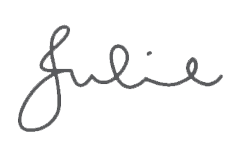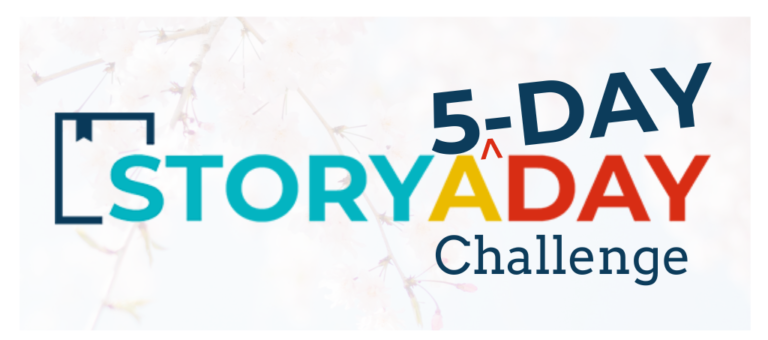Today’s task is to make a plan to make it stick.
You’re inspired (and inspiring!), but will you still be working towards unleashing your awesomeness into the world, two weeks from now?
In a moment, I’ll offer you one way you could build your practice and skills (in the StoryADay I, WRITER Course), but before that, let’s talk about one more principle that will strengthen your practice.
The Question To Ask, Every Time Your Approach Your Desk
I first heard this question from high-performance athletic coach Kevin Willis, but it made so much sense to me that I knew it would apply to a writing practice, too.
(Big surprise, huh? Athletes and writers are both humans, trying to change their behavior and achieve extraordinary things.)
When you sit down to play with your words, ask yourself if, today, you are trying to
If you’re focused on ‘be good’, you’re comparing yourself to others.
There’s a time for this– when you’re sending work out into the world– but it’s not where every day should start.
You can’t compare your first drafts to William Faulkner’’s published works!
If you’re focused on ‘getting better’, you are comparing yourself to your own best, to your yesterday, your skills and output last year…
This is a much more helpful place to be, as you approach your desk.
If you’re feeling stuck, unable to make progress, as yourself “Am I trying to be good, or get better?’
How To Make Progress, Long-Term
As you take your manifesto into your world, making today’s excitement last is going to require
- A plan of study
- A commitment to come back, week after week, no matter what lies your emotions tell you
- Support from other writers
And you can absolutely build that, by yourself.
Or…you can take advantage of the structure, lesson plan, and community I’ve put together in the upcoming StoryADay I, WRITER Course.
(Did you like that segue? I know you see what I did there)
Seriously, though, you do not have to do this by yourself.
In fact, if you’re anything like me, with the best will in the world, you CAN’T do this by yourself.
And maybe, like me, you’re getting sick of repeatedly doing that experiment.
It’s time to try something new.
The I, WRITER Course
The SToryADay I, WRITER Course is your chance to spend 7 weeks with me and a cohort of committed writers, going through lessons (like the work you’ve done in this challenge) and workshops that let you build your writing skills in around 90 minutes a week.
You’ll get 2 writing assignments each week (do one, or both) so that you can practice what you’re learning AND build your writing practice week after week, until it feels natural to be making time for your writing and for getting better.
And it’s all broken out into different areas of study (Imagine, Write, Refine, Improve, Triumph, Engage and Repeat) so you never feel overwhelmed.
Everything is shared in video, written and audio form and broken down into convenient bite-sized chunks (kind of like this challenge!) so you can work on each week’s content whether you have a block of 90 minutes or a few minutes on your lunch break.
You can read all about it here.
Doors open today and close on Sunday.
Course dates: Jan 27, 2023-March 15, 2023
Join I, WRITER
Bonuses
It’s one thing to sign up for a course, quite another to actually DO the course.
So I’m making it easy, with checkpoints, accountability, and one more big fat carrot to entice you to keep going. Read on…
Community Calls
You’ll be invited to join me and other members on 3 calls, where we can talk about what you’re discovering inside the course, where I’ll answer your questions, and where you can begin building your network, with the other writers in the course
Critique Week
Join me and the Superstars group for our regular Critique Week, and get fresh eyes on your story (don’t worry, it’s the most thoughtful, constructive group I’ve ever been part of!)
The I, WRITER Course has a break week built in after Week 3, and it just so happens to coincide with Critique Week. Isn’t that handy?
Don’t Go It Alone
Imagine making your writing stick, this time.
Imagine seeing the pride in the face of your friend who always believed in your talent, when you tell them “I’m writing”.
Imagine hearing friends and relatives casually talk about ‘my Nana/buddy, the writer’.
That’s a gift, not just to you, but to them.
It needs more creative people.
And you? You need – you deserve – to be able to lift your head from the daily grind and be the person you know you’re meant to be…even for a few minutes a day.
The I, WRITER Course gives you a structure and an excuse, to do that for the next seven weeks.
I’ve seen people come out the other end of this course with writing firmly anchored in their life. And with this certain knowledge that if they show up, the writing comes.
When they do, they keep getting better and they keep getting happier.
And they keep living up to their own expectations of themselves and the expectations of the people who love them.
I don’t want you to wait. I want you to start acting on the amazing manifestos that I’ve seen in this challenge.
I think it’s time that we step up and be courageous and put all of this good
out into the world.
I hope you’ll join me in the course.
And keep writing.


